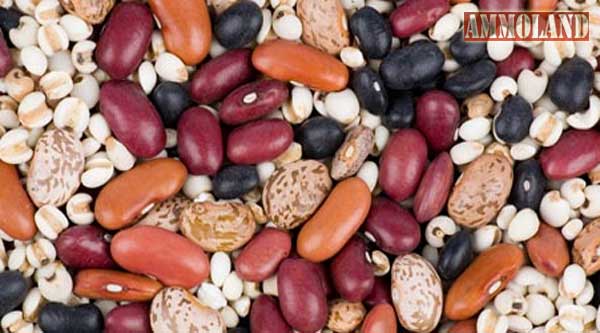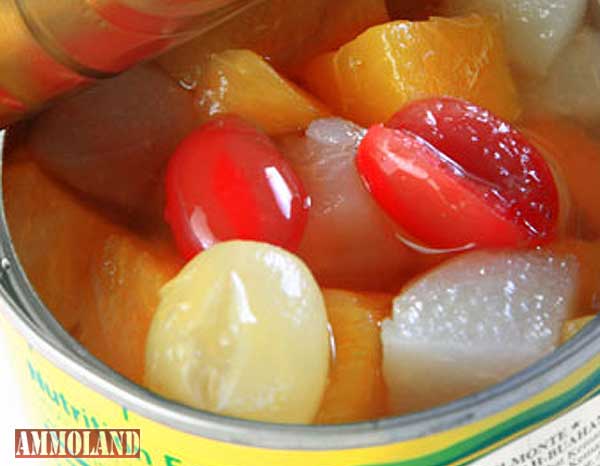The best survival food will position you to thrive in teotwawki, Thomas Conroy explains.


Midwest, USA--(Ammoland.com)- The acronym TEOTWAWKI has been tossed around the Internet long enough for it to become almost a joke.
Of course, it stands for “The End Of The World As We Know It,” a phrase that was itself probably apocalyptically cliché by the time it became the title of R.E.M’s hit song way back in 1987.
What is not funny, however, are how many times in history we can see “The World As We Know It” abruptly ended by war, natural disasters, pandemics and other tumultuous events.
For example, 150 years ago today, many residents of Georgia had either experienced – or were about to – the end of their world as they knew it due to the onslaught of William T. Sherman’s advancing army. Houses, even whole towns were burned to the ground, crops destroyed in the field, livestock slaughtered or run off, even the railroad ties heated and then twisted around trees in the infamous “Sherman’s Necktie” design.
More recently, we can see other cases of entire societies being upturned and ways of living ended, such as brought on by the rise of ISIS in Syria and Iraq, the Indian Ocean tsunami that struck Indonesia in 2004, and the devastating earthquakes in Haiti in 2010 that left as many as 1 million people homeless and 300,000 dead. Right now, the worst Ebola outbreak (read: “My Ebola Survival Gear Short List” ) in history has spread to five African countries with no signs of slowing down yet.
In any long-term, major disaster or upheaval, food will become a concern – that is if you live beyond the first week or so of the situation. I’ve compiled a list of the Top 5 foods to have on hand when TEOTWAWKI strikes to help you make it.
Again, this list is not geared toward food you’ll need to have if you’re stranded overnight in the car, or even if an ice storm knocks out power to your house for a week, which has happened to me – twice. This list is made thinking about the “end of the world,” a total disaster that lasts for weeks, months, or maybe even years.
Best Survival Food To Have After TEOTWAWKI
1) Dried Rice & Beans
Dried rice and beans have been staples for thousands of years. They offer very good nutrition, with plenty of carbs and energy in the rice – same with the beans, but they also add a healthy dose of protein. Both Bulk Beans or Bulk Rice
can keep for at least a decade when stored properly.
An easy, cheap way to store dried rice and beans is in HDPE (high-density polyethylene) food-grade buckets. Just put the bulk rice or beans into the bucket, and drop in a chunk of dry ice. Then set the lid on top. For the next few hours, occasionally “burp” the bucket by pressing down on the lid to force out the excess CO2 gas, but without lifting the lid. Once it no longer burps, totally seal it. Then store in a cool, dry place. That’s it.
You can compartmentalize the rice and beans by using smaller, food-grade containers. That way you can open only the amount you wish to prepare for any given day. For extra protection, you can put the rice or beans into Mylar bags before putting them into the buckets with the dry ice. If you use smaller containers for storage, you can easily eat the older stuff, and replenish with fresh. Buy cheap and stack deep with rice and beans. You can similarly store bulk red winter wheat and other dried grain crops.

2) Canned Fruit & Veggies
Canned fruit and veggies have a lot going for them as long-term survival foods. They’re currently cheap and abundant. They can last for years when stored in cool, dry places, and we already eat them as part of our every-day diet. Buy flats or cases of your favorite canned fruits and veggies. Then store them in a cool, dry place like a basement.
Rotate and replenish your stocks by eating the older cans first, and replacing them with new cans. Bulk Canned Fruits and veggies are so easy, that sometimes survival-minded folks overlook them, or consider them to be cheating somehow. Do yourself a favor, and stock up now, while it’s easy.

3) Preserved Meats.
Meat preservation is ancient technology. We’ve been drying and smoking meats for about as long as we’ve been around, and canning them or making them into confit for hundreds of years. If you don’t know what confit is, get thee unto Amazon.com, and lo, sell thy cloak and buy thyself a copy of Charcuterie by Ruhlman and Polcyn.
Just like with fruits and veggies, you can buy canned meats and store them long term. Even Brownells has a selection of canned meats available, prepared specifically with long-term survival in mind. Canned meat is great, and will last for years.
Also great for long storage is dried meat, or jerky. You can buy it ready-made, or easily make your own with just a few tools. Once you’ve got a supply of jerky, you can eat it plain, or pound or grind it into a fluffy, almost-powder, and then mix it with rendered fat and some dried berries, and you’ve got pemmican.
Native Americans perfected pemmican as the ultimate survival food. A few years ago, a pemmican ball wrapped in bison hide and buried beneath the frost line was discovered in Canada. It was at least a few thousand years old and still perfectly preserved. Talk about long-term storage! Pemmican was so important, that at least one war was fought over it in the early 19th Century.

2) Sugar & Honey
Sugar and honey are not just sweet-tasting, calorie-dense foods full of energy, they are also natural anti-biotics and preservatives. That’s why so many cultures have developed jams or jellies or sweetened, candied versions of foods for long-term preservation. You remember those canned fruits from up there in number 4? Why do you think they’re usually canned in some sort of sugary syrup?
So long as you keep sugar dry and cool and dark, and away from marauding insects, mice and rats, it will probably keep for longer than you will.
Bulk Honey has no known expiration date. It can harden into a solid mass, but gentle heating will restore its viscosity. Throughout history, honey was also used as a wound salve, not just a sweet treat. There are the oft-repeated stories about edible, 3,000-year-old honey being found in royal tombs from ancient Egypt, but those are sketchy and not completely proven. Either way, sugar and honey have so many uses that any truly-prepared survivalist must have some stored away.
(Note, I did not include salt here on purpose. Salt is an amazing mineral with great food-preserving properties, but does not provide calories itself, and is thus not actually a food)

1) Potatoes
Yes. The lowly potato is number one on my list. And I don’t mean dried or canned potatoes, either. I mean a bag of plain, regular spuds like you get at the grocery store. As a child, I helped my family dig a couple of thousand pounds of the tubers every August, so we could eat them all year long. We would wash them off with a garden hose, and spread them in the shade of a large tree, out of the sun. As fall set in, we would gather them up, and store them on the floor of an old, un-used egg house, with thick, insulated walls, and a cool, sawdust floor. Just for good measure, we’d sprinkle some pickling lime on the potatoes to keep the bugs and mold off.
In spring, we’d take the remaining potatoes and cut them so that each piece had at least one of the little “eyes” on the skin on it, and plant it. Many times, the long-stored potatoes already had more vines starting to sprout from them. Once they were safely in the dirt, Voila! More potatoes by August.
Potatoes are hardy and grow in just about any soil. I’ve even learned how to grow them on bare soil, covered only with a layer or hay, which makes for very easy harvesting. They keep for months, so long as they are dry and not touching each other. You can grow potatoes, no matter how many houseplants you may have killed in the past. And potatoes yield more calories per acre than just about any other crop known to mankind. You can bake them, fry them, boil them, eat them raw. If you chop them up and ferment them with water and sugar, you can even make vodka.
If you are serious about surviving a truly long-term, end-of-the-known-world situation, you will learn how to cultivate and harvest potatoes, and defend your precious, life-giving crop against bugs, critters and other people.

Not Rocket Science
One of the best parts about living in modern American society is that food is cheap and abundant. One of the worst effects of this bounty is that many of us have forgotten the food preservation skills and knowledge that our ancestors relied upon. Canning, drying, smoking, and preserving foods in fat, sugar or honey obviously worked well for those who came before us. It they didn’t, none of us would be here. And in a truly long-term disaster, only those who remember how to raise or hunt or gather their own food will live long enough to pass down stories of the “Great Fall” to their descendants. Prepare now and make sure its you!
Thomas Conroy is a firearms aficionado and writer living in the Midwest.



Great article. Living in the earthquake ridden far North, we have been cut off from the outside world for a week. In some winters we have been isolated due to Weather, so having extra I hand has been a way of life. Your suggestions are excellent, and yes, the lowly potato is part of our food stash. Unless the unthinkable such as a nuclear war (and what are the hands of survival?) and the animals died off, meat isn’t an issue for us. However your food choices of beans and rice will provide protein that can carry you for a… Read more »